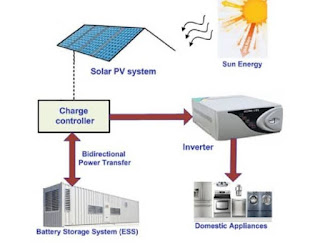Yes, It is possible to charge the battery without the Charge controller
but then you make the system prone to failure. Controller ensures that the maximum available power is delivered to the battery for charging itself. Not only that, but it also makes the system stable, especially when the system is powered by photovoltaics. Without MPPT in the system, the entire system is more likely to go into an endless cycle of shutdown and restart unless some logic is in place. You essentially have to rely on external logic to build the system, which makes the system more expensive.
What is ( MPPT) Solar Charge controller?
An Maximum Power Point Tracking charge controller is basically a charge controller that has a buck-boost power supply inside.
A system using a charge controller will typically be designed with a much higher solar panel system voltage than a traditional charge controller system uses or can use. This means that the wires/cables can be thinner as the transfer amplifiers will be lower (power input remains the same) and this higher voltage also means that the solar panel system will generate more voltage even when the light is not optimal and allow the MPPT charge controller to provide charging capacity under less than ideal conditions.
Related Post - 24 Volt Solar Battery Charger
It can convert excess voltage from solar panels into usable charging current or power. A traditional charge controller effectively uses a resistor (or pulse modulation) to reduce any overvoltage from the solar panels to a safe voltage for the battery, but the excess voltage is converted to heat or otherwise wasted
An MPPT charge controller can usually control light conditions that result in voltages that are "low" or "lower" and amplify or convert them to a usable charging voltage so that the energy from the solar panels can be used for charging, the current (amps) will drop, but it is much better than no or zero charging that a traditional charge controller will do under the same conditions. This means that the MPPT charge controller will continue to work and send power to the batteries even when it's cloudy, and is able to start charging earlier in the morning and later in the evening than a traditional charge controller can or will.
This simply means that an MPPT charge controller will put more power into the battery under many conditions that a traditional charge controller cannot. And even a slow charging speed is "better" than no or zero charging speed. This benefit is mainly due to the design/reengineering of the solar panel system to have a higher starting voltage, but it can even make a difference when using a solar panel system that was originally designed for use with traditional charge controllers. MPPT charge controllers can be "slotted" into an existing system and will effectively make the solar panel system "bigger" or "more efficient" by providing more charging power for a longer period of time, meaning more energy will be available. use, well, that is as long as it is used by the load when the battery is full.

